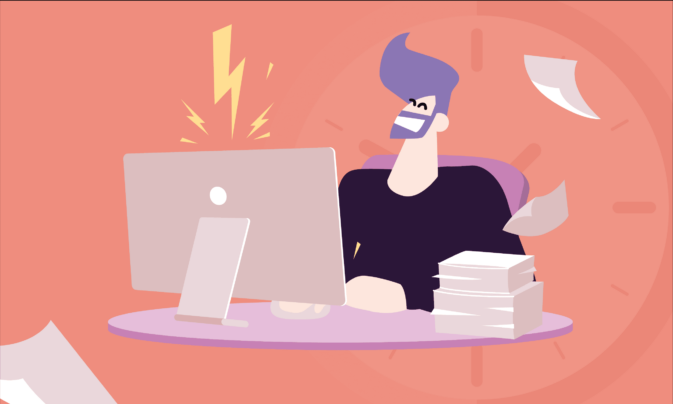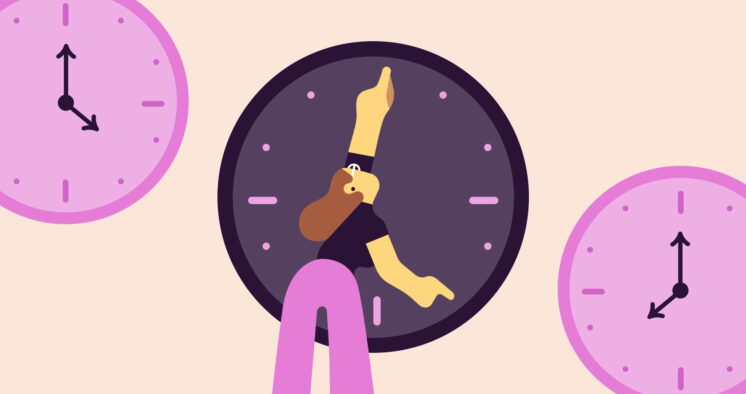The clock’s ticking at a crawl. And you’re at your desk, waiting desperately for the day to end.
It’s not as if you don’t have work. There’s a mountain of work piled up on your desk.
But instead of digging into it, you feel scared—lonely, distracted, and want to hide from it.
You’re not alone.
According to Gallup, only 15% of employees feel engaged at work. The remaining 85% experience boredom, procrastination, lack of purpose, and ultimately burnout.
Honestly, not everyone’s working their dream job. But even if you do, not everything you do is exciting. Like it or not there are things on your to-do list that you won’t enjoy doing.
So how can you breeze through a day without feeling overwhelmed with work?
All you need are some ideas and maybe a couple of new tools.
Today, we’ll cover just that:
So fasten your seatbelt, and let’s see how to make time go faster at work.
Why does time slow down at work (or does it)?
Our perception of time depends on our current emotional and physical state, engagement with work, feeling of purpose, and our lives outside of work.
Generally, when we’re feeling good, having fun, and able to focus, time tends to go faster. As they say, time flies when you’re enjoying what you’re doing.
On the flip side, when we’re struggling, drained, and unmotivated, the end of work looks like a pipe dream.
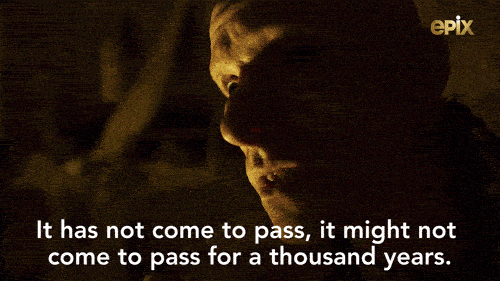
This is what this difference might look like at work:
| When a work day passes slowly | When time at work passes quickly |
|---|---|
|
|
Since you’re reading this, you’re probably struggling with long workdays.
But don’t worry about it. We’ll give you some ideas on how to make time go faster at work with these 11 tested techniques.
With some effort, you should be able to breeze through your daily work in no time.
11 techniques to make time go faster at work
1. Ignore the clock
You know what they say: “A watched pot never boils.”
Do you spend a lot of time checking the clock and getting disappointed because so little time has passed by?
If so, you could be triggering chronostasis.
This phenomenon describes the perception that time is slowing down due to your hyperawareness of time—and specifically, the act of staring at the clock.
This habit could also be drawing your attention away from work.
To help you break the habit, set regular alarms to inform you of the time. That way, you won’t have a reason to keep checking.
Another way is to pick up a task and focus on completing it fully before checking time.
Start with small tasks. Eventually, as your mind starts to enjoy the rush of completing a task, you will find it easy to complete even longer tasks without distraction.
2. Learn how to focus
Simply put, focus means the ability to pay complete attention to whatever you’re doing without external or internal distractions.
Deep, focused work helps you create better outcomes with less stress. In addition, time flies when you’re focused on work.
Yet, a lot of people struggle to focus.
However, contrary to popular belief, our ability to focus isn’t totally out of our control.
According to Dr. Andrew Huberman, anyone (including people with ADHD) can train their focus muscles and improve their ability to enter the flow state.
It’s not the usual “just sit down and do it” type of advice either.
Here are some of the exercises he suggests for improving your focus:
- Dilating your gaze on purpose to see more around you with your peripheral sight
- Meditating, aiming for 17-minute sessions
- Using a fidget spinner or toy to self-stimulate
- Blinking consciously to reset the perception of time
You can listen to his podcast, Huberman Lab, for more details on this and a lot of other interesting topics. Like why we dream or how to relieve brain fog.
Now back to how to make time go by faster at work.
3. Practice time blocking
Multitasking can keep you busy.
But it can also get you overwhelmed and feel like the work pile is infinite—while making you less productive.
With time blocking, you first organize tasks into task groups. Each task group has a related set of tasks. Then you set aside a dedicated time chunk to each task group.
Time chunking helps you:
- Reduce stress/overwhelm
- Achieve better focus by doing one thing at a time
- Limit distractions and interruptions (like switching between tasks frequently)
- Stay organized and make sure no tasks fall through the cracks
So how does it work?
- You organize your to-do list tasks into groups (chores, admin, billable work, etc.)
- Estimate how long you need for each group and create a schedule
- Experiment with time chunking methods like 90-minute work sessions or the Pomodoro Technique (25-minute work sessions alternated by 5-minute breaks).
Toggl Track helps you implement time blocking using a number of ways. For example, in the desktop app, you can use the built-in Pomodoro timer to block time for work and break intervals.
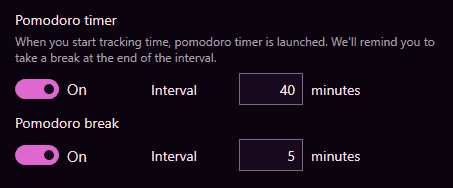
Managing time chunks in-app has some perks:
Doing this in-app has some perks:
- It notifies you when it’s time to work or take a break
- It’s integrated with your work, so you don’t have to add another tool
- Tracks and saves your working intervals into a log
- Gathers insights that can show you where you’re spending most of your time
- Allows you to take notes in the descriptions so you can optimize your approach and repeat your best results
And if Pomodoro alarms feel restrictive and distracting, consider its less invasive cousin, the flowtime technique instead.
4. Turn on “do not disturb”
“John just posted an update.”
“43 new posts since you last checked the app.”
“See what Georgie, Stephan, and others have been up to while you were away.”
You’re bound to get these notifications when you haven’t been active for a bit.
Like during work. And it’s the perfect trap: How to make time go by faster at work if not by scrolling it away?
To make sure you avoid the temptation, simply turn on “do not disturb. Here’s how:
- Mute your mobile phone and smartwatch.
- Turn off notifications on messaging apps and use asynchronous communication tools.
- Close email, social media, and video streaming tabs in your browser.
- Turn off push notifications from news and social websites.
- If possible, work from a cabin or a closed room during deep work.
The cute puppy videos will still be there when you’re done.
5. Plan your task schedule
Task lists are great tools to eliminate ambiguity, prioritize responsibilities, and keep you on top of your work at all times. In addition, scheduling critical tasks in advance helps you make the most of your limited time.
Here is an example of a visual task schedule from Toggl Plan:
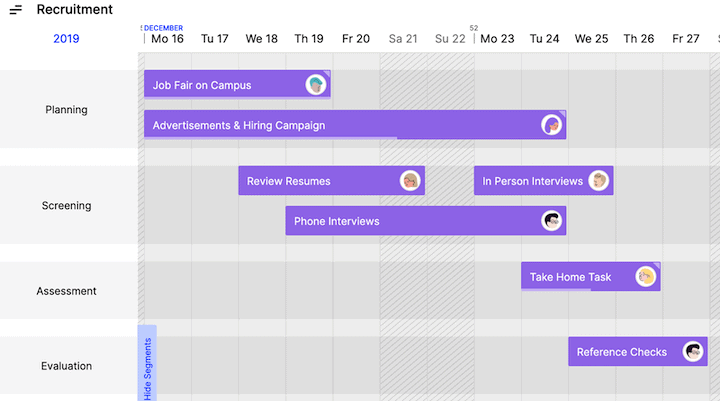
When more than a task competes for the same time slot, how do you decide which one gets priority?
That’s where you can apply The Eisenhower Matrix:
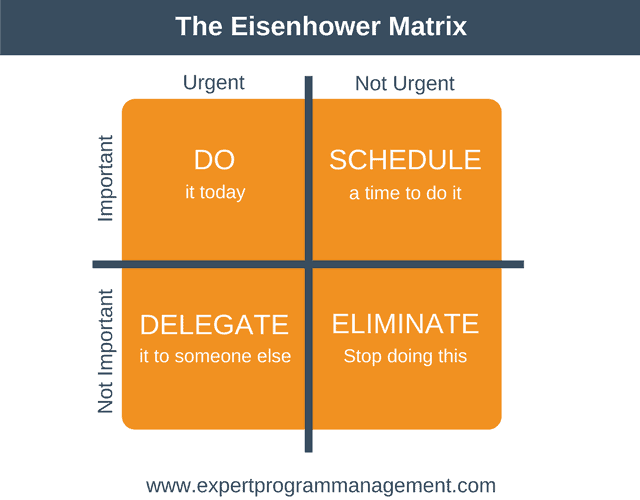
The idea here is that you:
- Prioritize your most urgent and important tasks
- Delegate urgent but unimportant assignments
- Delay important but low-pressure activities
- Eliminate the rest
- Never mix any of them up
You can use the Eisenhower Matrix to focus on the most important tasks on your to-do list.
So here’s what that might look like:
| Quadrant | List item examples |
|---|---|
| 1. Urgent, important (do) |
|
| 2. Not urgent, important (schedule) |
|
| 3. Urgent, not important (delegate) |
|
| 4. Not urgent, not important (eliminate) |
|
In addition to the Eisenhower Matrix, here’s a list of ways to prioritize tasks at work.
Structuring your list gives you direction.
And if it also gives you a reality check (you’ve got more on your plate than you thought!), the urgency could suddenly make your time go faster.
6. Learn something new
Stimulate your brain with new ideas—bonus points if it’s fun.
Here’s what taking up a new hobby, developing a skill, or just reading some fascinating information can do for you:
- Put a new twist or perspective on your regular workload
- Inspire and energize you to get things done
- Give you an opportunity to play and experiment without the pressure to succeed (if it isn’t work-related)—which could give you some ideas for work too
- Reignite the spark for your job, make it easier, and/or more enjoyable
- Challenge you and stimulate your brain
Plus, if it is fun, that tends to speed up time on its own.
7. Take an early break
A preemptive break is sometimes called for.
Maybe you worry about procrastinating, and this definitely can be the case.
But sometimes, delaying a task is the best thing you can do for your productivity. And sanity.
Here are some times when “embracing procrastination” could be a good idea:
- When you notice it’s been twenty minutes and you’ve been staring at the screen, doing nothing
- When your mind starts to wander
- When the idea of flipping your desk becomes more appealing than usual
This break doesn’t have to be a full stop.
Stretching your legs is great.
But you can also use this time to re-evaluate the situation and determine what to do next.
Once you’re feeling more in control, you’ll be able to make better decisions and get moving.
8. Use music to motivate yourself
Does music really help people learn faster and increase productivity?
So far, the scientific consensus hasn’t been able to go far beyond a vague “it depends.”
But how you feel about it, and what you associate with different types of music is still enough of an argument to make you consider it for work.
For example, some research suggests that epic orchestral music stimulates empowering thoughts.
Doesn’t do the trick for you?
You might prefer instrumental jazz to get those brain cogs moving, and drum & bass if you need an energy booster.
Or how about some lo-fi for the early morning?
Whatever it is for you, it’s worth giving it a shot.
Even if it does little other than lift up your mood, having fun is still enough to make your work faster.
Pro-tip: Create playlists for different situations ahead of time. That way, you’ll always be ready and won’t waste time trying to remember the perfect song when you need it.
9. Buddy up or chat with a colleague
Your shift goes by faster when you get to work with people you like.
It helps you get work done more efficiently. In addition, it also helps improve your:
- mood and energy levels
- understanding of work
- engagement with the team
Workplace socialization is a bit trickier when you’re working remotely. Here are some ideas for remote team-building activities:
- Chat with a colleague—and not just about work
- Participate (or organize) an online team activity, like:
- Scavenger hunts
- Personality tests
- Photo of the week, etc.
- Start silly traditions and inside jokes with colleagues
- Share memes and videos in a group chat
- Have an accountability buddy
10. Tackle meaningful work
Engagement drops when you’re not doing something impactful.
Dr. Jordan Peterson talks a lot about looking for meaning and purpose in life, rather than looking for “happiness” as the end goal.
His rationale is this: There is a baseline level of suffering in life that you can’t avoid.
But doing something meaningful makes the suffering more tolerable. In other words, it gives you a reason to persevere and helps you become happier.
Applying this to your professional life, meaningful work can be either:
- Something objectively meaningful to your job/agency/clients, or
- Personally meaningful and fulfilling to you
So how do you find a purpose for yourself?
Maybe you can’t be too picky about your job responsibilities. But you can look at the big picture and think about why your job matters. Find out the impact you’re making on the company’s bottom line.
If this objective bigger picture doesn’t feel important to you, pick up hobbies or volunteer your free time to do what feels meaningful to you.
11. Change your scenery
If you have the option, of course. But if you’re feeling unproductive, bored, and tired of your daily routine, nothing says you can’t switch it up (unless, you know, your higher-ups say it).
Try working from a different room, library, cafe, or even a friend’s house (with permission).
You could also think about renting an office or working from a co-working space.
Or any other relaxing, interesting, or new place you can think of to recharge your batteries and energize you for work.
Stop staring at the clock and make time go faster at work
Time moves slowly when you’re not interested in what you’re doing.
So besides the techniques, we covered above, what else can you do to break free from a slow workday? What else can make you happier, more engaged, and more productive?
Jitesh is an SEO and content specialist. He manages content projects at Toggl and loves sharing actionable tips to deliver projects profitably.
